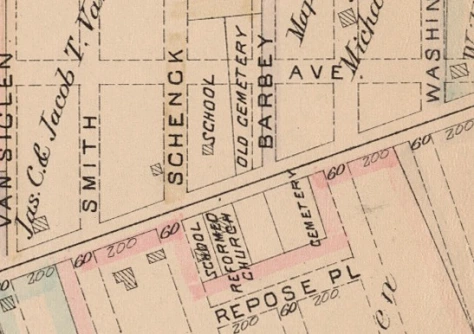
When the historic town of Flatbush became overcrowded with Dutch farmers in the 1670s, a consortium of settlers were granted permission to set up new plantations on land east of Flatbush in what is now the East New York section of Brooklyn. The new community, known as New Lots, established a burial ground on common lands situated on the south side of today’s New Lots Avenue and Barbey Street, extending north past Livonia Avenue.
By the early 19th century, New Lots’ farmers had tired of traveling to Flatbush to attend church, and in 1823 built their own Dutch Reformed Church on the south side of New Lots Avenue, opposite the cemetery where generations of Van Siclens, Rapeljes, Vanderveers, Schencks and other early families had been laid to rest. Around this same time, they erected a school just west of the cemetery, on the common lands on the north side of New Lots Avenue. Soon needing to expand their burial grounds, in the 1840s they established a new cemetery—owned and managed by the lot holders—on land adjoining the Reformed Church. Many descendants of the old families moved their dead from the original cemetery to family lots in the new cemetery. The original cemetery gradually feel into disuse and the remaining graves were largely abandoned; by the end of the 19th century, the site was commonly known to locals as the “old slave cemetery.”
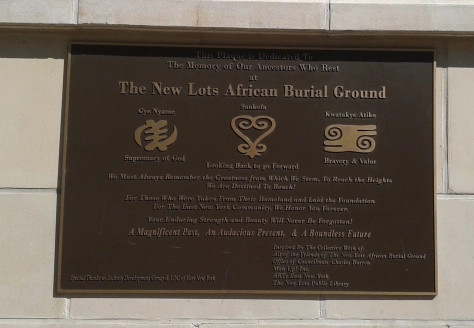
Most of the original Dutch settlers utilized enslaved people on their farms. The population of New Lots in the 17th and 18th century is unknown, but the 1820 census enumerated 338 whites and 91 blacks in New Lots and half of the town’s 62 families owned slaves. Although the black population of New Lots remained relatively small until the 20th century, African Americans have been a critical part of the development of New Lots since colonial times. When the original burial ground was established, a clearly distinguished portion of the parcel—the section at the north end, near Livonia Avenue—was set aside for New Lots’ black community. The African American community continued to use this burial ground throughout the 19th century. Articles from the Brooklyn Daily Eagle in the 1880s and 1890s note, “once in a great while there is a colored person interred in the back part of the [old New Lots Cemetery] and “there is no care taken of the place except in the negro part.”

By the turn of the century, New Lots had evolved from a rural farming district to the 26th Ward of the City of New York. With its broken down fences, overturned headstones and generally dilapidated appearance, the old cemetery—containing the African burial ground as well as many burials of white community members that had never been moved to the new cemetery—was considered an eyesore and nuisance to the area’s residents. The new, large Public School 72 now stood next to the graveyard, erected in 1888 by the Board of Education to replace the town’s old school. A local resident decried the situation in an 1899 letter to the Daily Eagle, remarking, “a desecrated cemetery alongside of one of the best and largest public schools in Brooklyn is not a very pleasing spectacle, and it is to be hoped some action will soon be taken by the city government toward remedying the evil.”

After years of community agitation and complaints, in the early 1920s the old cemetery was taken over by the school for use as a playground. Although public officials announced their intentions to remove the remaining burials on the site—including at a 1908 meeting of the New Lots Board of Trade, where President Jacob Hessel stated, “it matters not that these bones are but the remainder of slaves; slaves they were, but they were also part of New Lots’ history, and as such we owe them respect”—there is no evidence removals occurred at the time the playground was established.
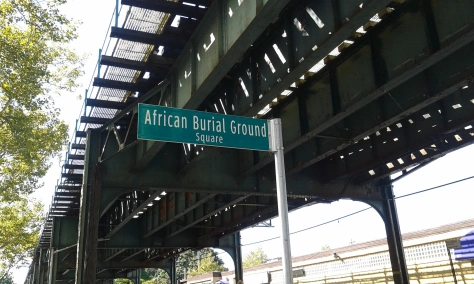
In the mid-1950s, the old burial ground site was redeveloped—P.S. 72 was demolished, replaced with a branch of the Brooklyn Public Library, and the school playground was converted into a public park, (Schenck Playground), both of which still stand at the site today. A shirt-pleating plant was built on the northernmost section of the old cemetery site, north of Livonia Avenue—in 2000, this building was converted into New Hope Family Worship Center. In 2017, fragments of human bone, pieces of tombstones, and other evidence of the old cemetery were located during archaeological tests conducted at Schenck Playground prior to planned improvements at the site, suggesting disturbed and intact burials may exist beneath the park. In 2019, the playground was renamed Sankofa Park in honor of the African burial ground that was part of the old cemetery.
On the south side of New Lots Avenue, the 200-year-old Dutch Reformed Church survives and, next to it, the “new” New Lots Cemetery that has been in use since the 1840s. The cemetery is still owned by the New Lots Cemetery Association, composed of descendants of New Lots’ early Dutch settlers.
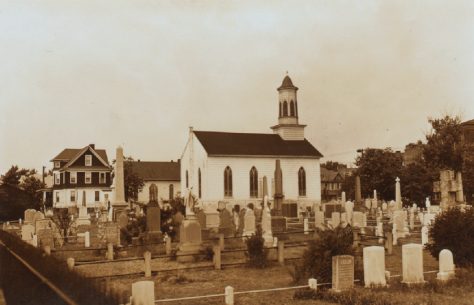
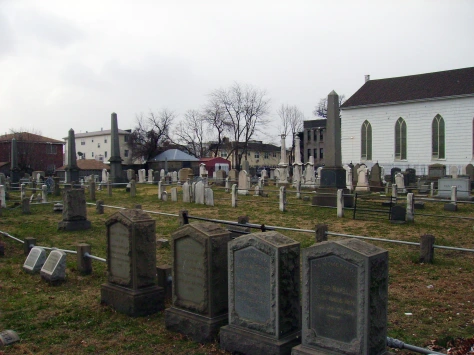

View more photos of New Lots Cemetery
Sources: Robinson’s 1886 Atlas of the City of Brooklyn, Pl 40;“An Old Farmer’s Talk,” Brooklyn Daily Eagle, Sep 19, 1886; “An Old Burying Ground,” Brooklyn Daily Eagle, May 31, 1891; “A Neglected Cemetery,” Brooklyn Daily Eagle, Feb 5, 1899; “The Old Dutch Cemetery in East New York,” Brooklyn Daily Eagle, Aug 5, 1900; “Cemetery Gets Permission,” Brooklyn Daily Eagle, Apr 24, 1903; “Canine Cops in New Lots,” The Chat [Brooklyn], Nov 7, 1908; “New Lots Cemetery Ass’n Elects Rapelje as Head,” Brooklyn Daily Eagle, Apr 11, 1923; Fairchild Cemetery Manual (1910), 105; Cemetery Inscriptions from New Lotts Burying Ground (Frost 1913); Phase IA Archeological Literature Review and Fieldwork Plan, Schenck Playground (Hartgen Archeological Associates 2016); Phase IB Archeological Field Reconnaissance, Schenck Playground (Hartgen Archeological Associates 2018); “Celebration and Re-interment of Our Ancestors,” Amsterdam News, Aug 1, 2019
